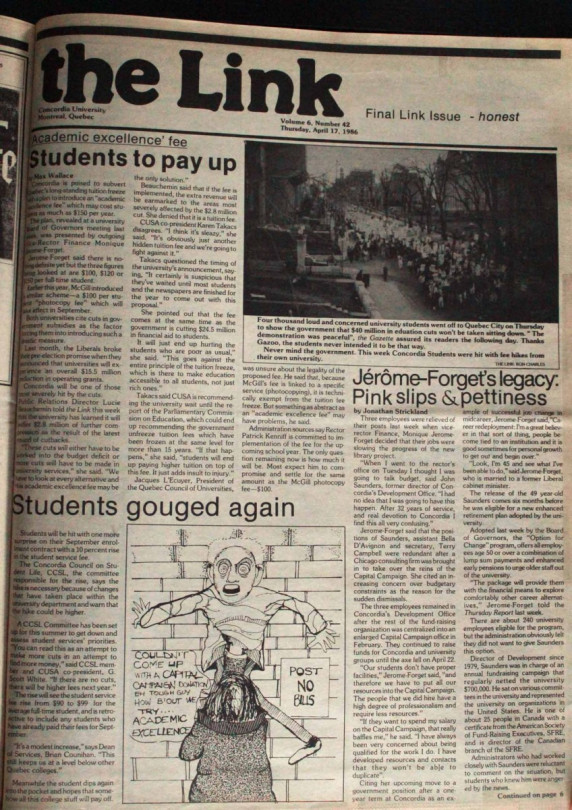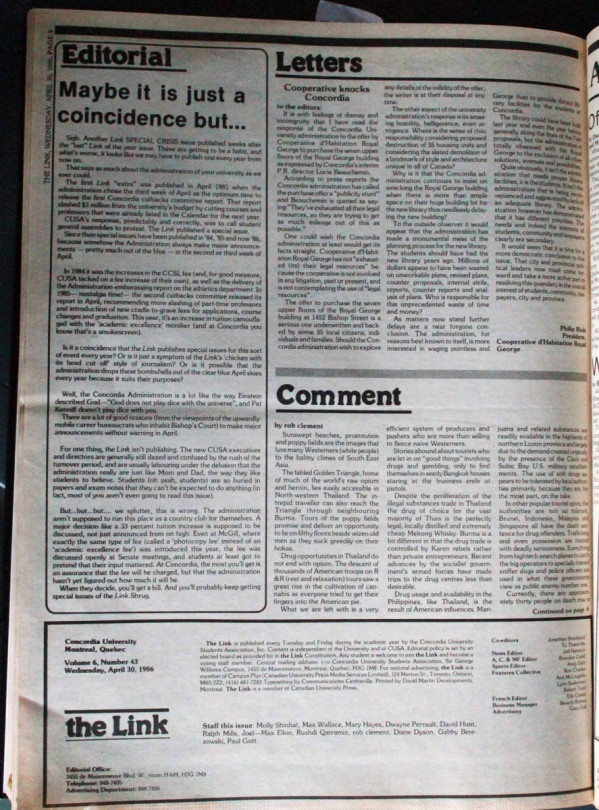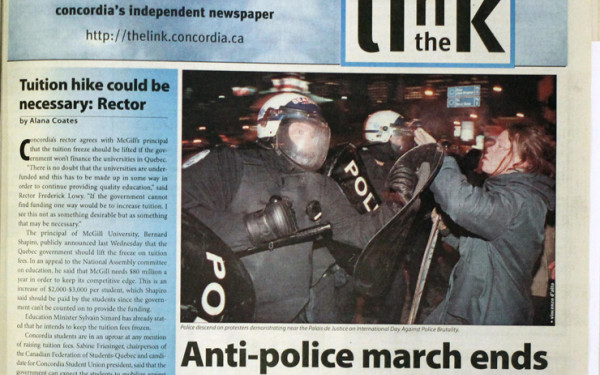The 1986 Tuition Freeze
On April 17, 1986, The Link published a special “Crisis Issue”—named as such because we didn’t usually have a print issue in April—reporting on a disguised tuition hike announced by the Concordia administration.
The editorial read:
“Special issues have been published in ’84, ’85 and now ’86 because somehow the administration always makes major announcements—pretty much out of the blue—in the second or third week of April […] This year it’s an increase in tuition camouflaged with the ‘academic excellence’ moniker (and at Concordia you know that’s a smokescreen).
“A major decision like a 33 per cent tuition increase is supposed to be discussed, not just announced from on high […] When they decide, you’ll get a bill. And you’ll probably keep getting SPECIAL CRISIS issues of The Link. Shrug.”
A few months before the announcement, the Liberal government cut $15.5 million from Quebec universities’ operating budgets.
As a result, universities implemented other fees to sustain their expenses. At McGill it was a “photocopy fee” of $100.
At Concordia, the cuts amounted to $2.8 million. The “academic excellence fee” was then put forward—to the tune of $84 per student.
While advocating a tuition freeze, the Quebec government approved the fee, allowing universities to charge up to $100 per student for course materials.
Speaking in front of the National Assembly’s education committee in September 1986, Patrick Kenniff, Concordia’s Rector at the time, complained about the university’s lack of funding.
“We have the honor of being the only university in Canada, I believe, that has to suspend its library shelves from the ceiling of the building because the floors won’t take the weight,” Kenniff said.
“It’s often said that if all our professors and students brought back their books at the same time, the building would collapse.”
Quebec universities were also struggling with significant debt: in 1986, it amounted to $80 million.
‘‘All the fat is gone,’‘ Lucie Beauchemin, an adviser to the rector of Concordia University told The Globe and Mail at the time.
‘‘Now we’re dealing with skin and bones.’‘



_600_832_s.png)




